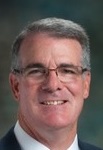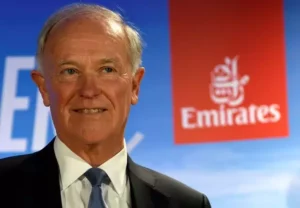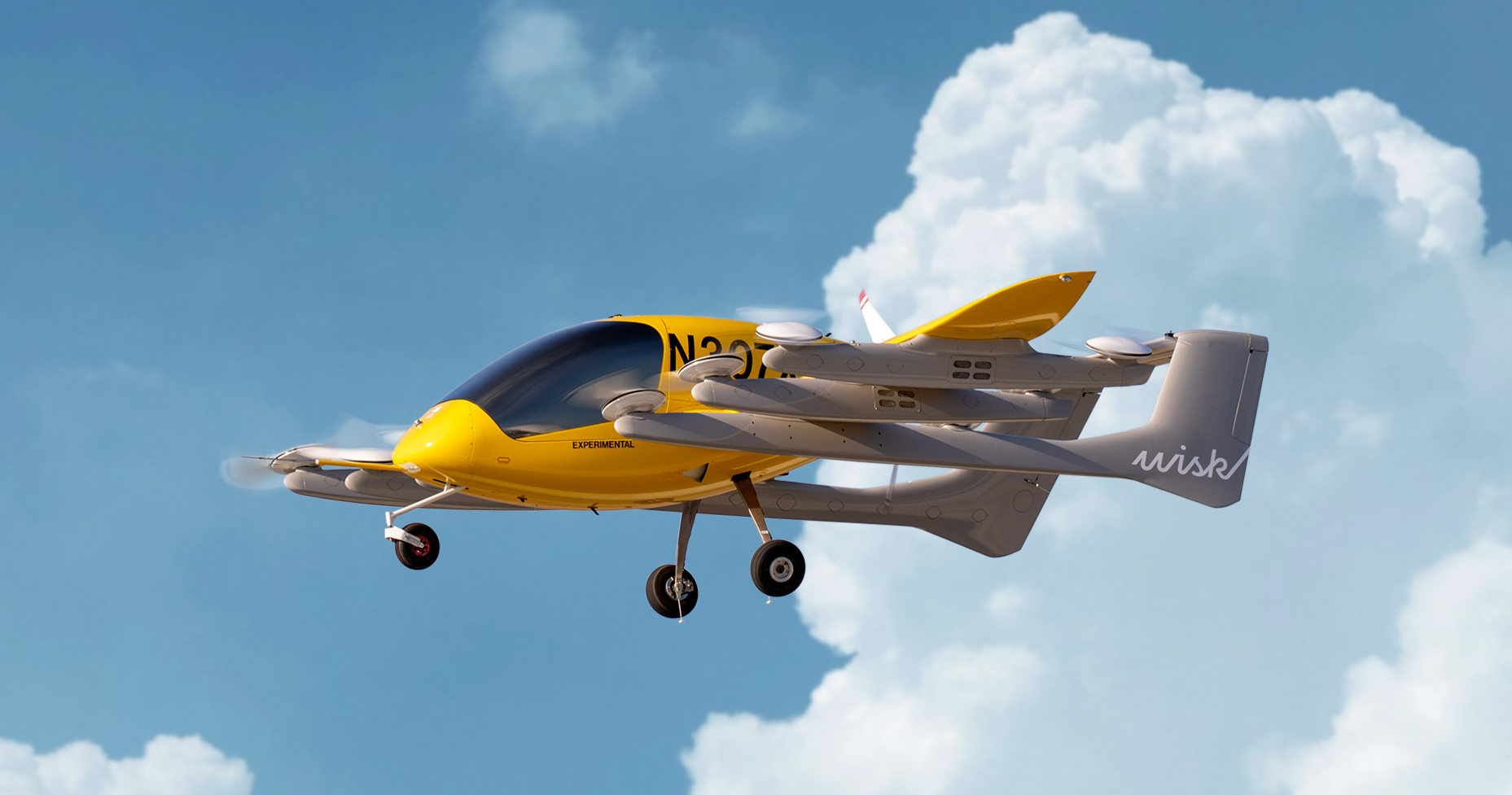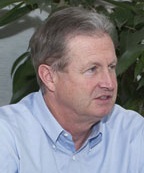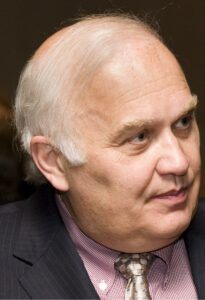Leeham News and Analysis
There's more to real news than a news release.
Lockheed Martin sees LMXT as complementary to KC-46A, not competitive
Subscription Required
Now open to all readers
By Scott Hamilton
Jan. 30, 2022, © Leeham News: Lockheed Martin’s LMXT US Air Force refueling tanker will be a complementary offer to the service in the forthcoming KC-Y competition.
In an exclusive interview with LNA earlier this month, Lockheed Martin (LMCO)’s LMXT Campaign Director, Larry Gallogly, said the Air Force wants an airplane that is bigger, has more range, and more fuel offload than the incumbent Boeing KC-46A. This fits the LMXT, based on the Airbus A330-200 Multi-Role Tanker Transport (MRTT) now in production.
Airbus partnered with LMCO in 2018 to prepare for the KC-Y competition. Airbus has 61 orders for the MRTT from around the world. Boeing is building 179 tankers for the Air Force from the original KC-X competition. It has a handful of orders from other countries.
The KC-Y contact will be for up to 160 tankers. The competition will pit Boeing and Airbus against each other for the third time. Airbus first teamed with Northrop Grumman in the first round of the KC-X campaign. Northrop won the contract, but the award was protested successfully by Boeing. Northrop dropped out of the recompete, with Airbus going alone. This time, Lockheed Martin will be the lead, and Airbus the subcontractor.
The two fights were bitterly waged in the public and political domains. LMCO hopes to avoid a repeat.
No plans to relitigate
“We have, from the start of this, with both ourselves and Airbus, have had no intention of re-litigating the [KC-X] competition,” Gallogly said. “Our goal has always been to provide what we consider to be a complementary capability. There are going to be 179 KC-46s out there, but there are significant capability gaps that the US Air Force has that this LMXT can fill. We are not trying to provide the same capability in a different wrapper. Our goal is to provide a very different capability and, again, fill those gaps.”
Gallogly said that after talking to the Air Force and Pentagon repeatedly, from the Air Mobility Command to transportation command to the individual theater commanders, to the people in the Pentagon, “what we heard consistently was that the gap exists for fuel offload at strategic ranges. You know as everybody who focuses on the Pacific Theater, you’re faced with the tyranny of distance there, and we needed to provide as much fuel offload as we possibly could.”
Emirates president says Boeing made life difficult
Subscription Required
By Scott Hamilton
Introduction
Jan. 27, 2022, © Leeham News: Despite vociferously criticizing Boeing over delays, technical difficulties and uncertainties over certification, delivery dates and performance, the president of Emirates Airline said the carrier is committed to the 777X.
Tim Clark said industry talk that Emirates may swap orders for the 777X for additional Boeing 787s isn’t correct.
Clark made his remarks in an interview with LNA on January 11. He also said he plans to retire within the next six months. Clark previously announced a retirement date but agreed to stay on to see Emirates through the pandemic crisis.
Summary
- “Boeing made life difficult.”
- Three-year delay has repercussions.
- The future of 777-8 passenger model is uncertain.
Boeing has cash flow positive 4th quarter, 1st since 2019; takes charge on 787 program
Jan. 26, 2022, © Leeham News: Boeing reported its first cash flow positive quarter, the fourth quarter, since early 2019 today as it issued its 2021 financial results. The 737 MAX was grounded worldwide March 10-13, 2019. The company was cash flow positive by $700m.
For the full year, Boeing remained cash flow negative, at $3.4bn. Boeing recorded a $3.4bn non-cash, pre-tax charge of $3.5bn on the 787 program. Deliveries have been stalled since October 2020.
“Don’t delude the public” on environmental advances in aviation
By Scott Hamilton
Jan. 26, 2022, © Leeham News: The International Air Transport Assn’s Annual General Meeting in Boston last October focused on industry progress and goals toward a greener environment.
In a fanfare series of panels and announcements, IATA set a goal of industrial carbon neutrality by 2050. But in reality, this was a step backwards from a goal described in 2011 by Jim Albaugh, then-president of Boeing Commercial Airplanes. Albaugh made his remarks in a speech before the Royal Aeronautical Society.
At the IATA AGM, Tim Clark, president of Emirates Airline, cautioned the industry: “Don’t make promises you can’t keep.”
LNA spoke with Clark this month, who expanded on his IATA appearance.
Boeing invests $450m in Wisk Aero air taxi venture
By Bjorn Fehrm
January 25, 2022, ©. Leeham News: Boeing and Wisk Aero yesterday had a media briefing on why Boeing is extending its investment in Wisk Aero with a further $450m.
The main technology is not the eVTOL aircraft. Wisk is just one of many upstarts that relies on batteries and multiple electrical propulsors to create a VTOL air taxi. It’s the pilotless operation that’s the key technology in the project. As perhaps the only VTOL company, Wisk goes directly to pilotless flight.
Brian Yutko, VP of Sustainability and Future Mobility at Boeing, explained: “The pilotless flight technology is of great interest to Boeing. It’s challenging technology, but it has a wide field of applications once mastered. We are not targeting our airliners but other civil and military applications. It’s an important driver for us in the continued support for our Wisk joint venture.”
Putting some reality into ecoAviation: steps *backwards*
By Scott Hamilton
Analysis
Jan. 25, 2022, © Leeham News: The airline industry makes a splash about setting goals to become carbon neutral by a date certain. It also set a goal to reduce CO2 emissions in absolute terms by a date 30 years in the future after achieving carbon neutrality.
How will these lofty goals be achieved?
Using lightweight materials in airplanes, including composites. Improving aerodynamics. More fuel-efficient engines. There’s “great promise” in biofuels. Improving air traffic management.
Were these the big announcements by the International Air Transport Assn. at its annual general meeting in October in Boston?
Nope.
These goals were outlined in a speech in June 2011 by Jim Albaugh, then-president of Boeing Commercial Airplanes (BAC) before the prestigious Royal Aeronautical Society (RAS).
The IATA AGM pronouncements went backward. Albaugh said in 2011 that the aviation industry’s goal of net-carbon neutrality was for 2020. IATA’s goal for achieving net carbon neutrality is 2050, the year Albaugh said was the goal to reduce CO2 emissions in absolute terms.
Lockheed near announcing location for LMXT tanker final assembly line in US
By Scott Hamilton
Jan. 24, 2022, © Leeham News: Lockheed Martin (LMCO) is expected to announce as early as this month where it will assemble its LMXT aerial refueling tanker should it win the US Air Force’s KC-Y contract. Lockheed’s 2021 earnings call is tomorrow, Jan. 25, but it’s unclear if an 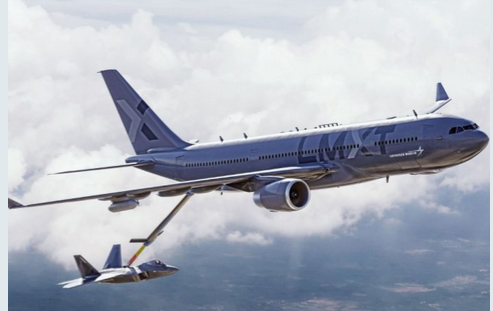 announcement will be made on the call.
announcement will be made on the call.
The top contenders appear to be the Airbus final assembly complex in Mobile (AL), or Lockheed’s own facilities in Marietta (GA). Others may be in the mix.
In an interview with LNA Thursday, Larry Gallogly, the director of the LMXT campaign, said an announcement will be made “toward the end of this month.”
LMCO will compete for the US Air Force’s KC-Y Bridge Tanker contract. The Request for Proposals is expected to be issued this year. Boeing will offer its KC-46A tanker. The KC-46A fulfills the KC-X contract won by Boeing in 2011.
Pontifications: A retrospective of the KC-X refueling tanker competition from Boeing’s perspective
 Part 2 of the Boeing focus for the USAF Aerial Refueling Tanker
Part 2 of the Boeing focus for the USAF Aerial Refueling Tanker
Jan. 24, 2022, © Leeham News: Jim Albaugh was president of Boeing Integrated Defense System (IDS), now known as Boeing Defense, Space and Security (BDS) during the competition for the US Air Force’s KC-X program.
After 9/11 (2001), Boeing was reeling as US airlines canceled or deferred orders in the aftermath of the terror attacks in New York City and Washington (DC). Terrorists hijacked four airplanes (all Boeing, as it turned out) operated by American and United airlines. Then, US carriers dominated the world market as customers for Boeing and Airbus. Boeing was disproportionately affected, as it was the USA’s two biggest airlines that were victims of the terror attacks.
US 5G roll out ignores concerns for Air Transport safety
By Bjorn Fehrm
January 18, 2022, ©. Leeham News: Despite year-long protests from the World’s airlines and the FAA, the FCC (Federal Communications Commission) allows Verizon and ATT to roll out 5G base stations underneath the approach paths of landing aircraft in the US.
In 2020 the RTCA (Radio Technical Commission for Aeronautics) did tests that established the risk of 5G Base stations affecting the critical Radio Altimeters needed for bad weather landings as real.
After FAA issues a 2021 December 23 AD (Airworthiness Directive) about the danger, airlines must now decide what flights must be canceled during bad weather spells on affected airports.
Pontifications: COTS and the KC-46A Aircraft Production Systems
Part 1 in a Boeing series about the USAF refueling tanker
By the Leeham News Team
January 17, 2022, © Leeham News: COTS is an acronym meaning Commercial Off the Shelf. It’s often a requirement for certain types of aircraft to be used by the US Air Force.
The title is a bit misleading in that in most cases, there is no directly usable off-the-shelf product, but instead, a jumping-off point that saves a tremendous amount of development. In aircraft procurement, many things have been bought this way. The advantage to the Air Force is that they get a known flyable aircraft that is for the most part debugged and has an operational history that allows the Air Force to estimate the maintenance burden and training requirements. It shaves years off the acquisition process and can be a very cost-effective way to gain new capabilities.


